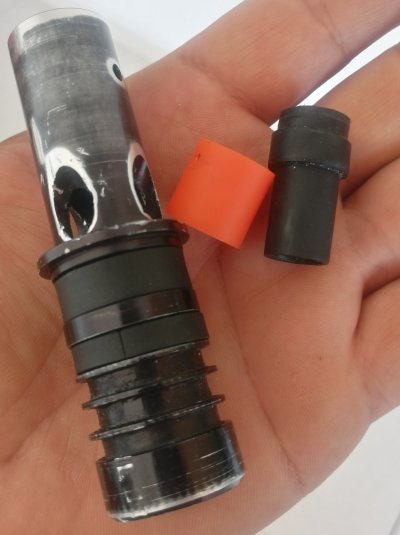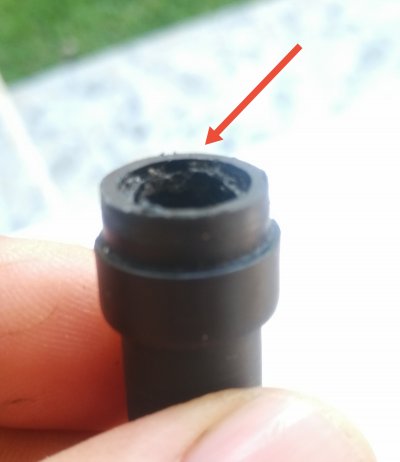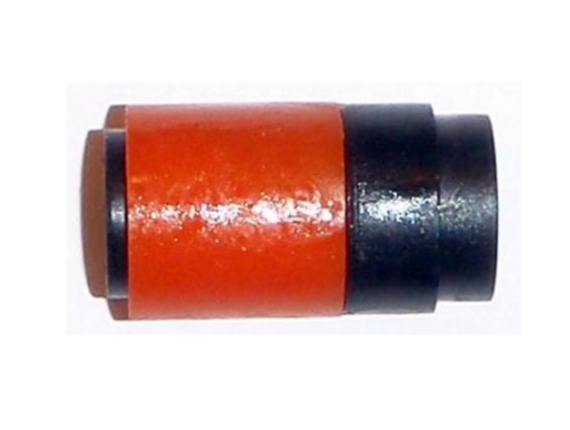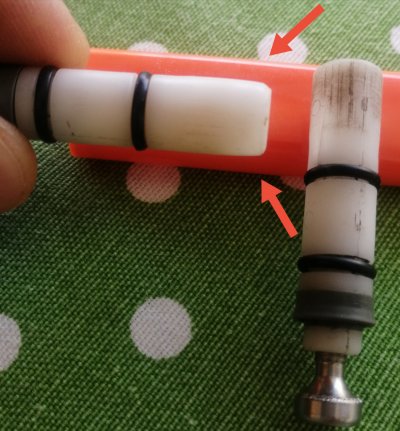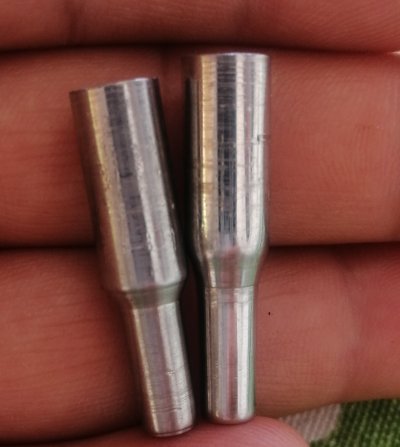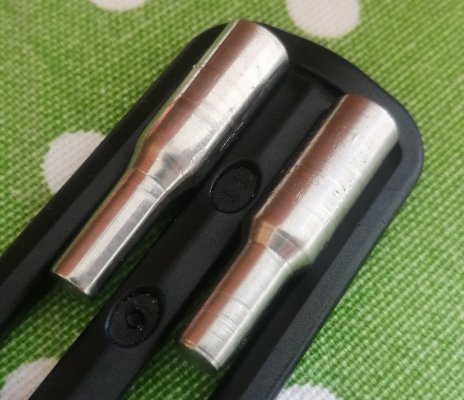Yes, that slight recess would certainly help, in fact it seems to be shown on the "Mirage" schematic (part 54).

-
Welcome to the DeeperBlue.com Forums, the largest online community dedicated to Freediving, Scuba Diving and Spearfishing. To gain full access to the DeeperBlue.com Forums you must register for a free account. As a registered member you will be able to:
- Join over 44,280+ fellow diving enthusiasts from around the world on this forum
- Participate in and browse from over 516,210+ posts.
- Communicate privately with other divers from around the world.
- Post your own photos or view from 7,441+ user submitted images.
- All this and much more...
You can gain access to all this absolutely free when you register for an account, so sign up today!
Shock absorber
- Thread startertromic
- Start date
Thread Status: Hello
, There was no answer in this thread for more than 60 days.
It can take a long time to get an up-to-date response or contact with relevant users.
It can take a long time to get an up-to-date response or contact with relevant users.
Yes, I am sure the rubber sleeve extrudes into that undercut recess. It should be possible to calculate the volume of that recess and work out the allowable compression before the rubber has to change density, which it may or may not do as filling the available "empty" space is more likely. The plastic shock absorber bodies do not have that undercut which would indicate that Mares considered that it was not required for plastic piston guns.
Same shock absorber shape is shown on first model "Sten" parts diagram which uses a metal piston and shock absorber. I have never taken the muzzle apart on my gun which is one of the earliest "Sten" guns, in fact it has no trigger adjustment screw as they were yet to come.

Same shock absorber shape is shown on first model "Sten" parts diagram which uses a metal piston and shock absorber. I have never taken the muzzle apart on my gun which is one of the earliest "Sten" guns, in fact it has no trigger adjustment screw as they were yet to come.
Last edited:
Close examination of the outer cylindrical surface of rubber shock absorber sleeves indicates that water surrounding the sleeve in the muzzle is progressively squeezed forwards out of the small circumferential gap surrounding the rubber sleeve inside the muzzle body. The rubber sleeve crushes first at the rear end as it expands radially outwards, this radial expansion progressing to the front end of the sleeve thereby allowing any seemingly trapped water around the sleeve to be driven forwards in the muzzle body. The incompressibility of water is the factor that delays the rubber sleeve from filling the entire annular gap and reaching the inner wall of the muzzle at the front end of the sleeve. The now pressurized water film (being squeezed by the radially expanding rubber behind it and the shortening gap with respect to its telescoping length) can get out of this annular gap via the muzzle nut screw thread or through the gap between shock absorber body and muzzle nut where the former slides through the latter. Evidence for this internal water transport mechanism is that wear marks occur on the surface of the rear section of the rubber sleeve near the anvil shoulder and not at the front end of the rubber sleeve, the explanation being that the water film surrounding the rubber sleeve persists longer at the front end and shields it from rubbing on the muzzle interior. Another explanation for this happening is the water pressure is initially higher on the anvil side of the shock absorber as the rapidly approaching piston seal forces water out of the inner barrel while the water pressure inside the muzzle and surrounding the shock absorber was at ambient pressure before the shot. Of course water is also driving out of the gun through the annular gap between the shaft and muzzle and the shock absorber bores, but that water flow is on the inside of the shock absorber body.
Last edited:
Here is an illustration of what I think happens inside the muzzle, based on the rub marks seen on the exterior of the rubber sleeve. Water escaping along the screw thread of the muzzle nut will only come out at one spot by following the gap between the threads, although it is only a very tiny clearance and relies on the muzzle nut not being tightened sufficiently for its base to be absolutely flush with the front end of the muzzle body.

Hello friends !!
What shock absorber for seac asso without vaccum kit that work well?
I tried salvimar but did not pass the tail! without being the original, which would be good? This information is important to me !!
I'm importing from usa the original but could buy some other that worked well !!
THANKS !!
What shock absorber for seac asso without vaccum kit that work well?
I tried salvimar but did not pass the tail! without being the original, which would be good? This information is important to me !!
I'm importing from usa the original but could buy some other that worked well !!
THANKS !!
Tray Mares or Cressi for 13 mm barrel.Hello friends !!
What shock absorber for seac asso without vaccum kit that work well?
I tried salvimar but did not pass the tail! without being the original, which would be good? This information is important to me !!
I'm importing from usa the original but could buy some other that worked well !!
THANKS !!
https://forums.deeperblue.com/threads/shock-absorber.95313/#post-885827
Hi everyone. I know the topic and the discussion is a little bit old. But I could not find some details on shock absorbers suitable for Omer Airbalete. Mine seems to be damaged and piston gets stuck after each shot. I am planning to build a new one on my mini lathe. Which material should I use? Polyamide? Or POM? Or castermid?
I had been using POM for shock absorber.Hi everyone. I know the topic and the discussion is a little bit old. But I could not find some details on shock absorbers suitable for Omer Airbalete. Mine seems to be damaged and piston gets stuck after each shot. I am planning to build a new one on my mini lathe. Which material should I use? Polyamide? Or POM? Or castermid?
Thank you very much. I am gonna give it a try.I had been using POM for shock absorber.
Looks like the material has broken up either from impacts or foreign material being slammed into it. What does the front of the piston look like? Remember these guns are made in Taiwan, so the material may have been selected on price if a change has been made by the manufacturer at some time. Chromed brass sliding pins in these guns instead of stainless steel show an ignorance of what is required in pneumatic guns used in the ocean.And this one which shows the damage on the shock absorber. Piston stucks here.
That is what I exactly need. Thank you very much.
The front of the piston is also damaged over 2-3 years. Took a bullet shape, thinner on the front, larger on the back. That also has a part on my issue. I think the shaft adapters that I made from hardened steel (which are 0.5 mm wider than original) lead to that damage. I will upload a photo soon.Looks like the material has broken up either from impacts or foreign material being slammed into it. What does the front of the piston look like? Remember these guns are made in Taiwan, so the material may have been selected on price if a change has been made by the manufacturer at some time. Chromed brass sliding pins in these guns instead of stainless steel show an ignorance of what is required in pneumatic guns used in the ocean.
And these are the shaft adapters that I made. I use what I can reach. I tried 304 and 316 stainless steel. They are not that hard and usually damaged easily due to impact. I used silversteel on those ones. I can heat treat them. But they are not stainless. The first time you use them they rust but it does not go deeper through the material. Since my machinery skills suck  there might be slight differences among adapters.
there might be slight differences among adapters.



